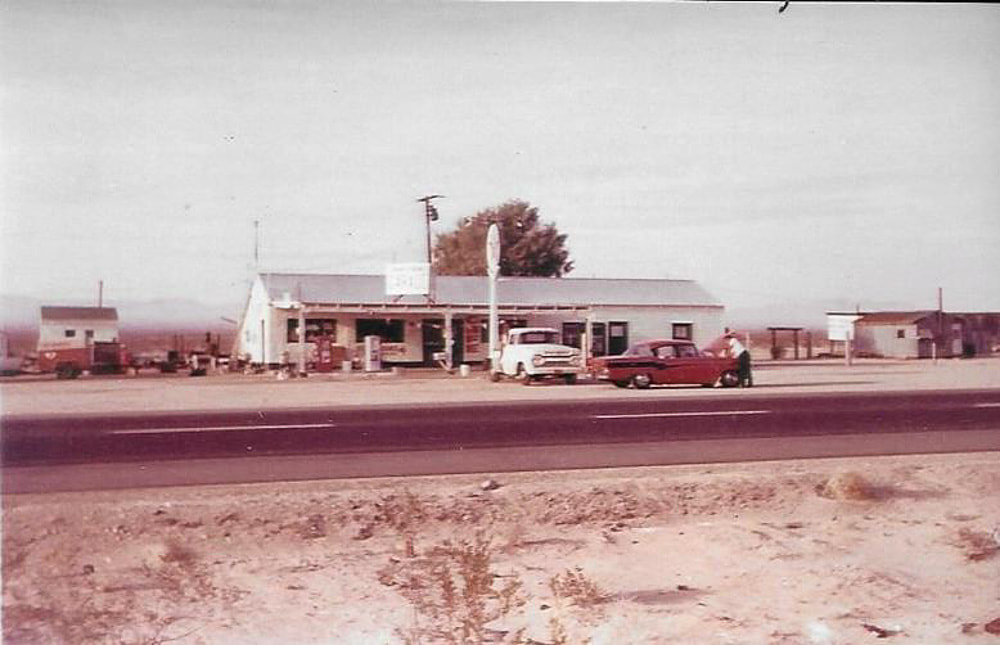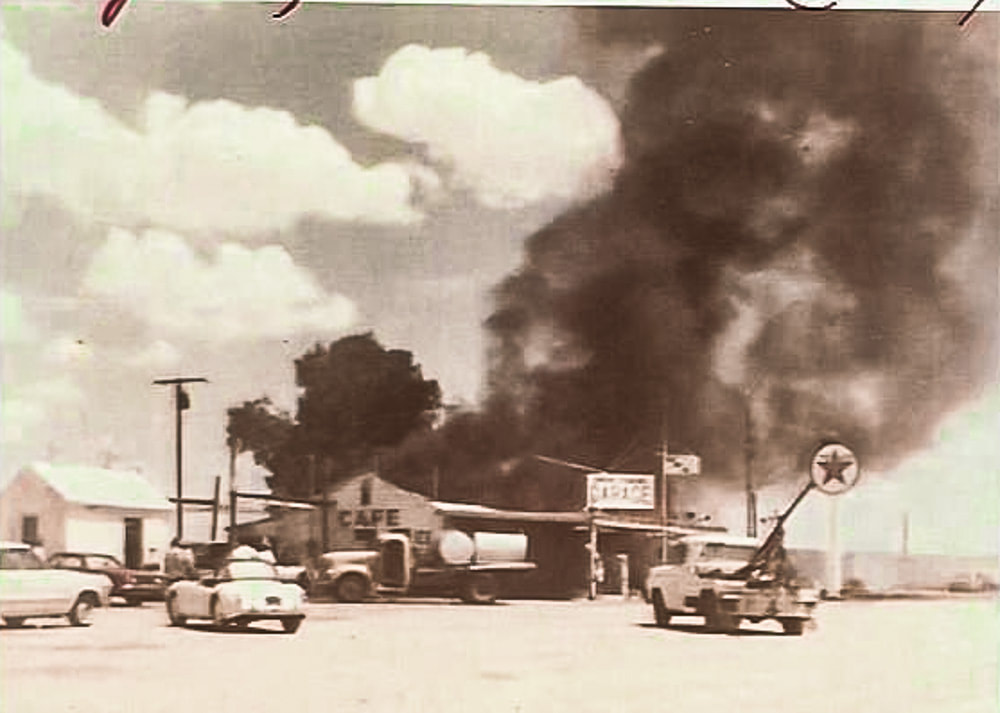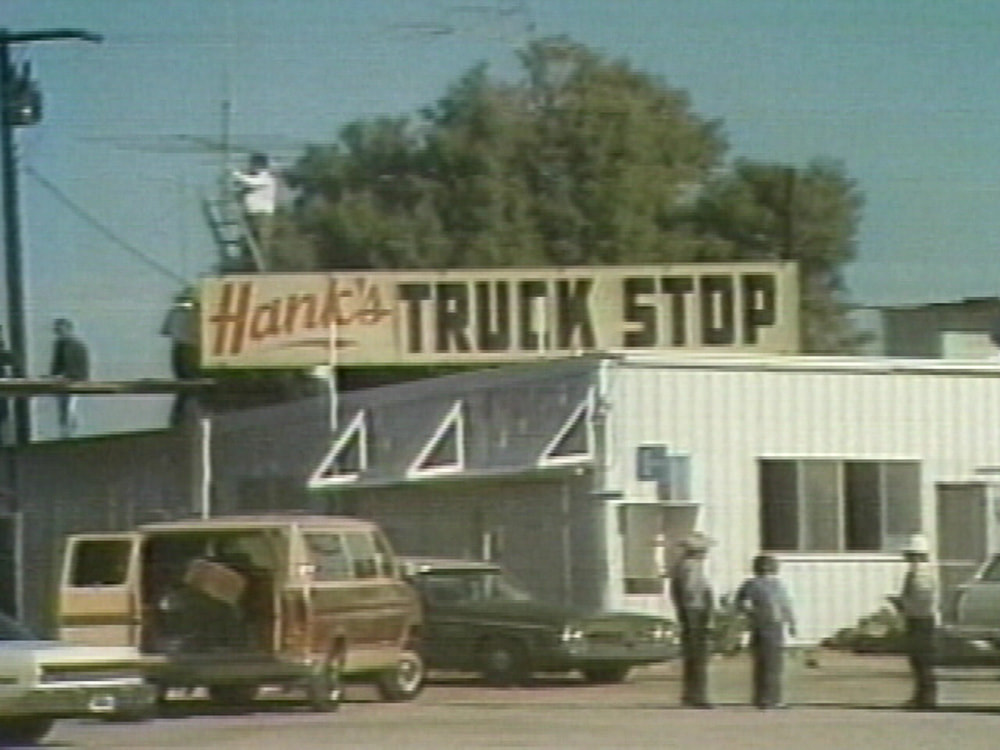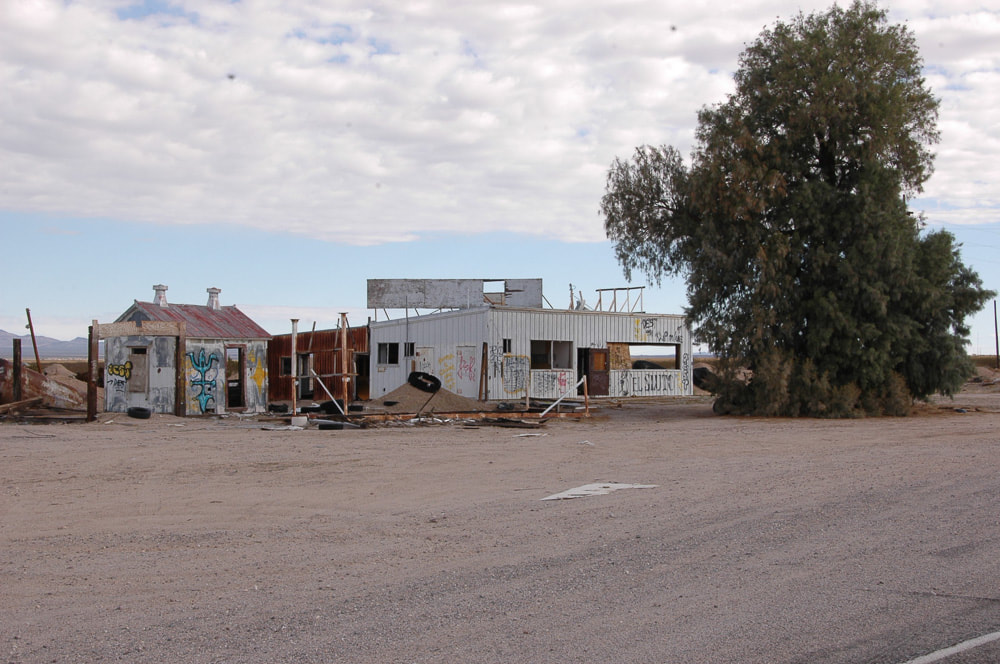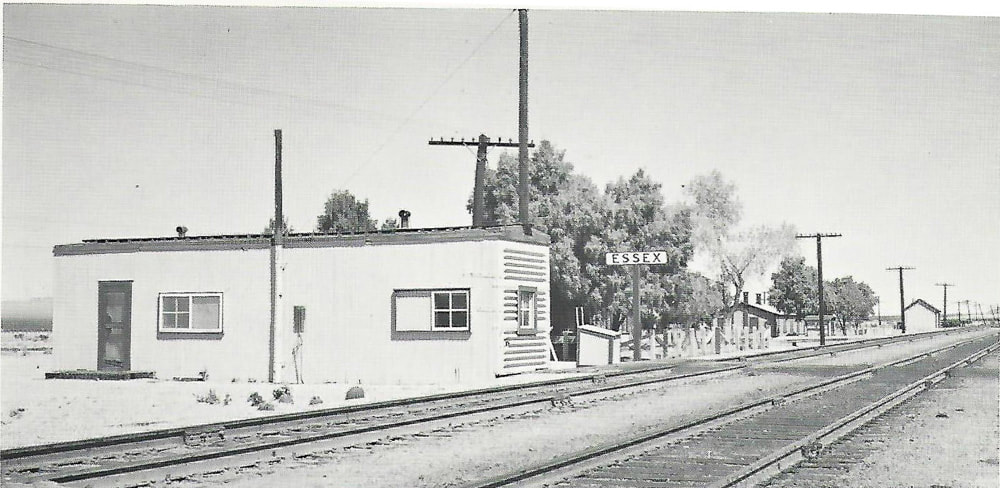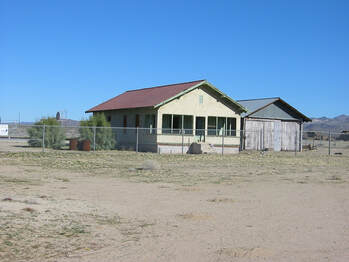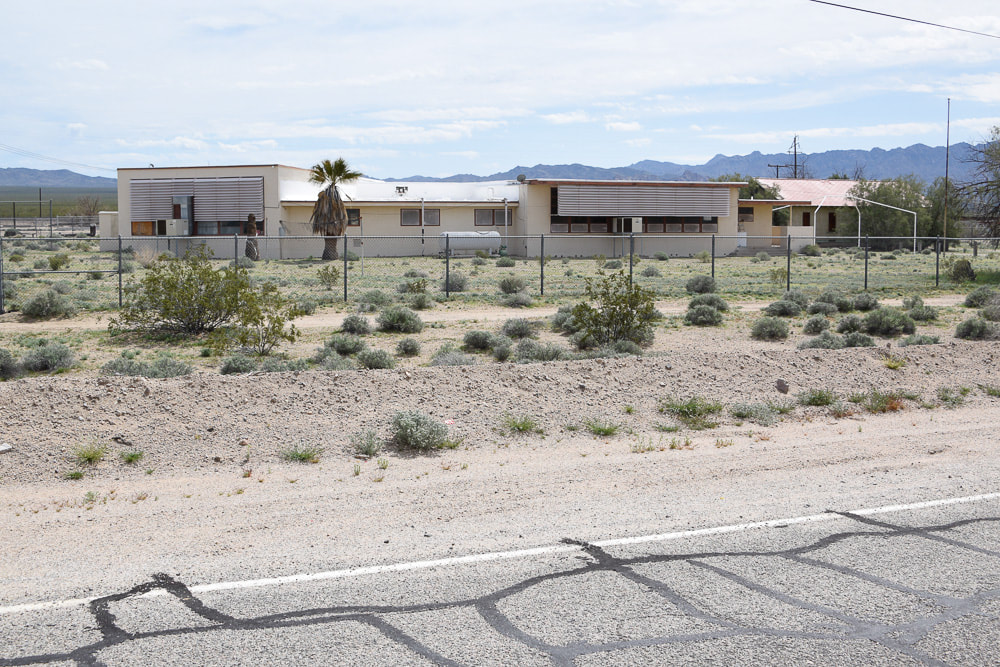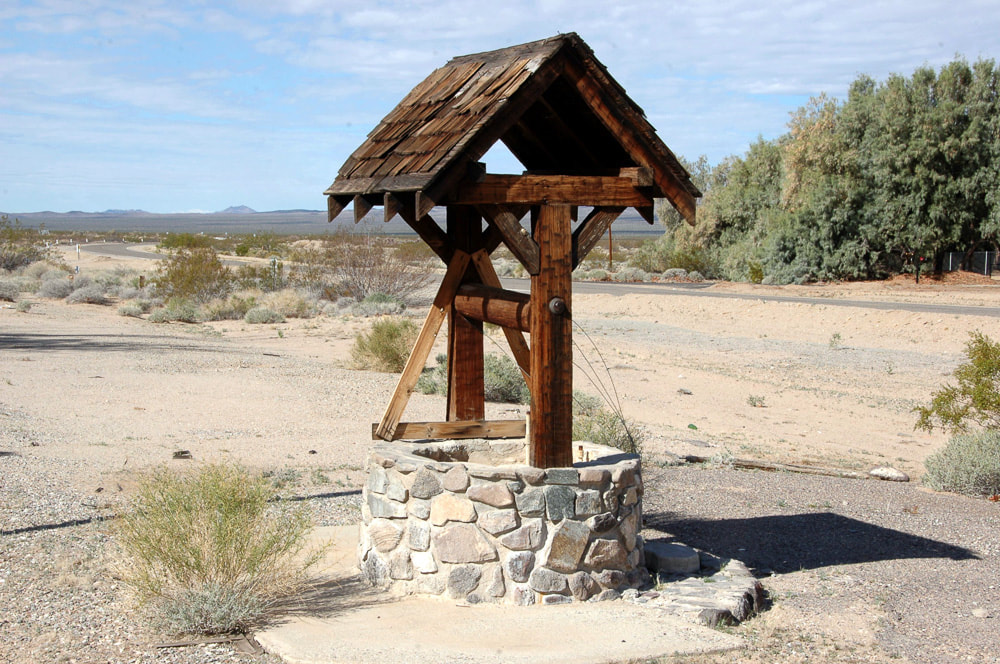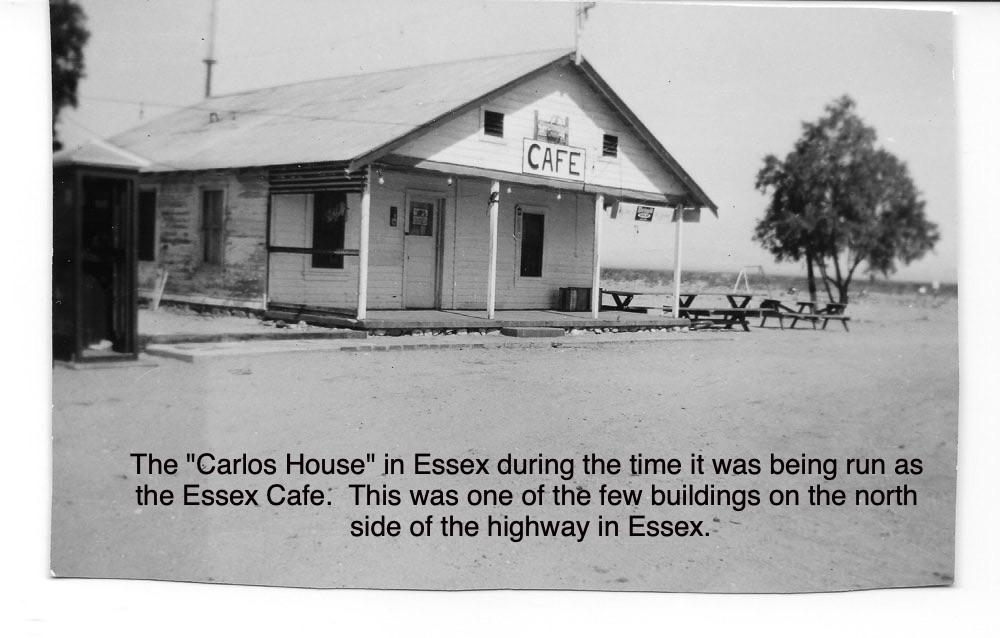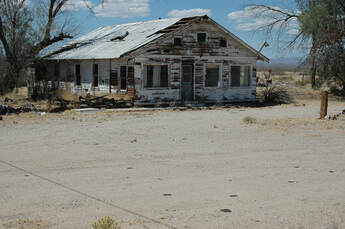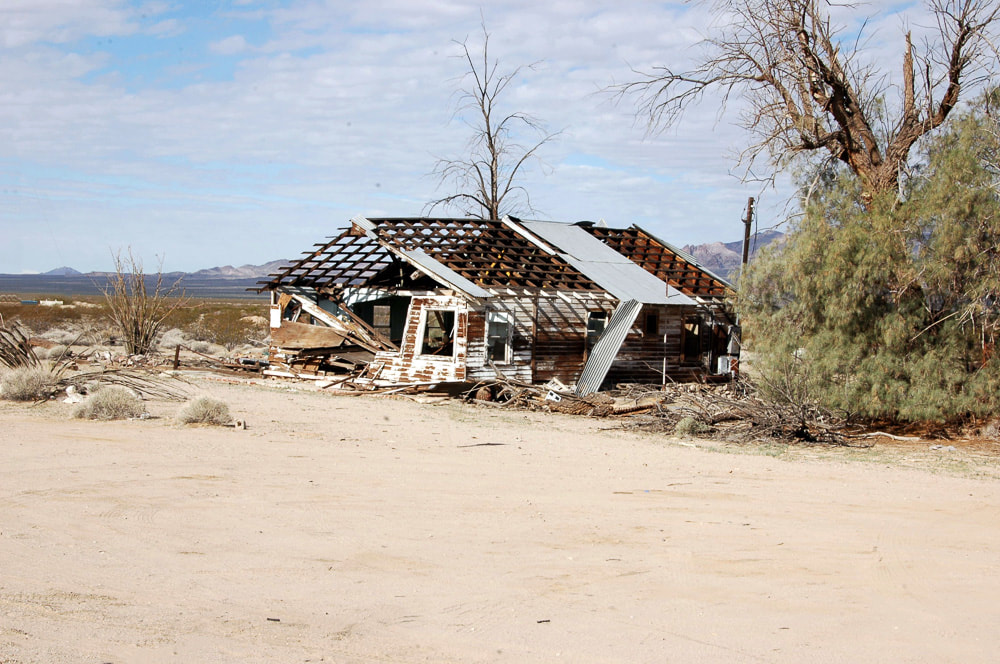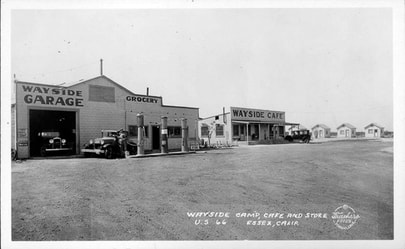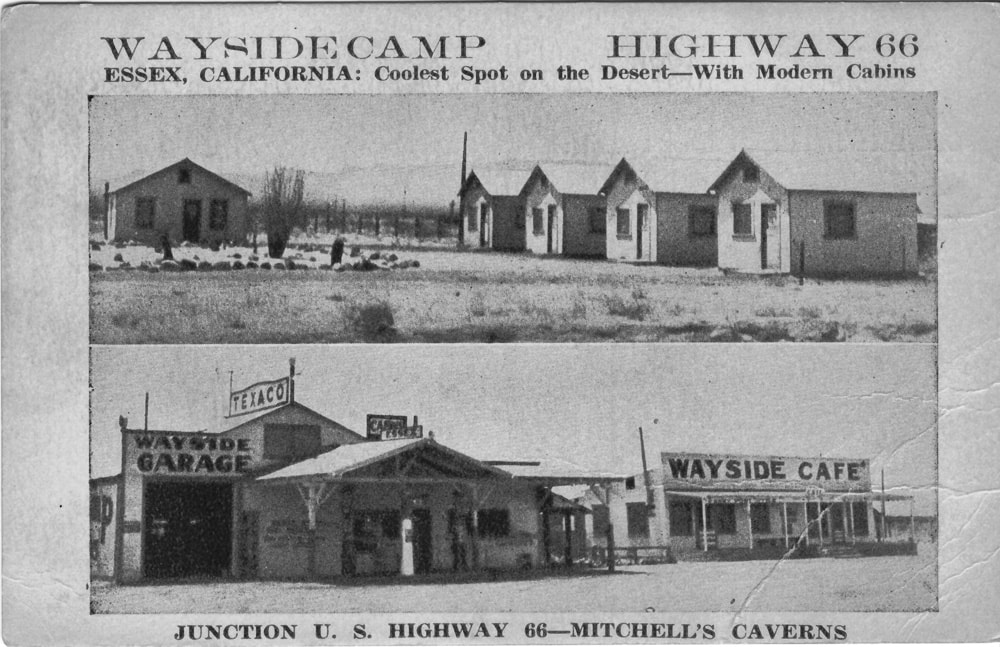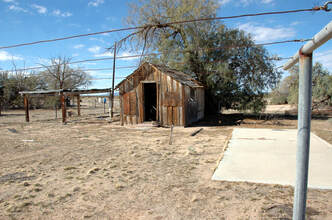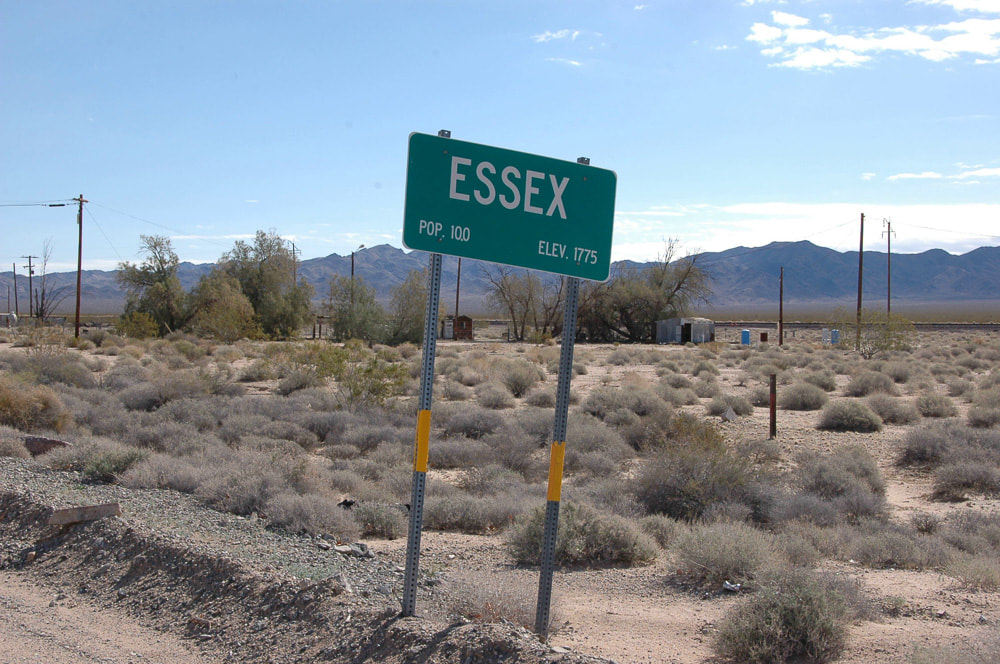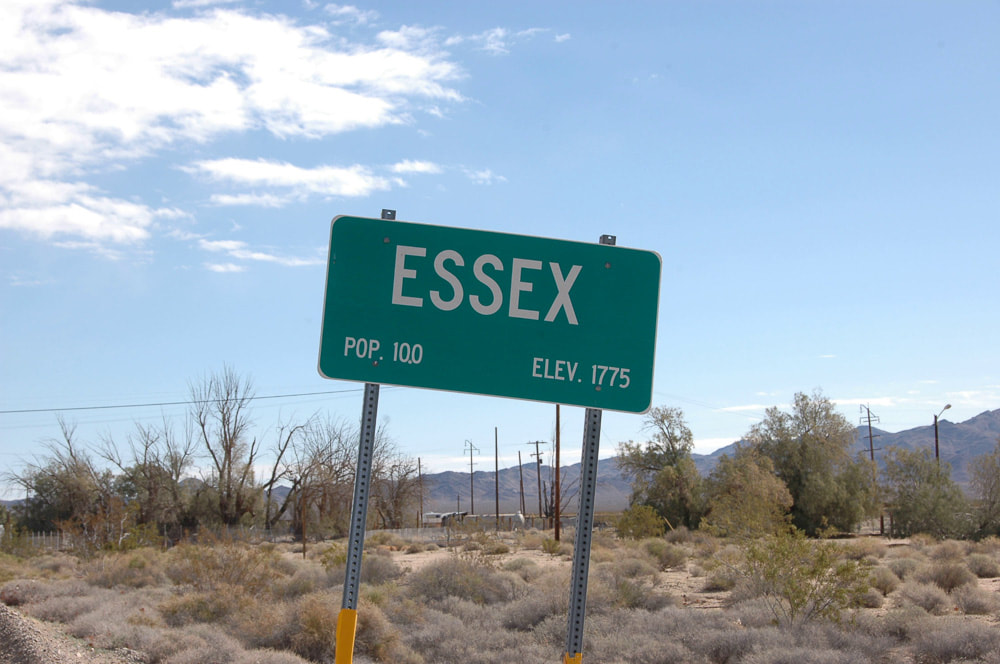About a half mile east of Essex, at the junction of National Trails Highway and Goffs road was the site of a Texaco service station that was commonly known as “Hank’s Place”, named for Hank (Henry Joseph) Cusson who wanted to get out of the San Diego construction business. Hank purchased the property from a woman named Frankie Moran who was anxious to leave Essex after her husband died. Whether the Morans are the ones who first built the place is uncertain. After purchasing the property Hank moved his family to Essex and operated the business from 1960 to about 1972.
The original Texaco service station was a wood frame building that caught fire from an overheated kitchen grill in 1968 and was destroyed. Hank rebuilt the place with help from his relatives who flew in from New England, and this time he used corrugated tin siding instead of wood. When completed the business was operated as a truck stop and consisted of a Texaco gas station, garage, café, a towing service and a 2,000-foot runway out back. Hank was an accomplished pilot and residents of Essex at the time recall that it was not uncommon for California Highway Patrol officers to fly to Hank’s Place for lunch. They also remember Hank being somewhat of a ‘daredevil’ pilot and having several minor accidents with his plane, a Cessna 140 and later a Cessna 172. In emergencies he also occasionally flew injured motorists to the hospital in Needles.
The business was run by Hank with the help of his wife, Elva, two of his children, and occasional employees who lived on the premises. Hank also sold used cars when the opportunity presented itself by scavenging parts and assembling vehicles from those that had been abandoned by unlucky motorists.
Shortly after the Interstate-40 was completed in the early 1970s California passed an ordinance that underground gasoline storage tanks had to be renovated. The cost of the upgrade combined with the downturn in highway traffic on Route 66 forced the service station to close, but the business continued to operate for a while as a garage, towing business, and café.
Hank sold the property about 1972 and retired to Kingman, Arizona where he passed away on April 22, 2002. His estranged wife, Alva, was in a nursing home in Long Beach, California at the time and died there on the same day as Hank.
Levi Gudmundson purchased the property from Hank and ran the business from about 1975 – 1982, and 1985 - 1990/91, and in later years the business went through several different owners, but in the late 1990s or early 2000s the business finally closed permanently. Today the site is in ruins with only the shell of the café still standing amidst a field strewn with rubble and trash.

